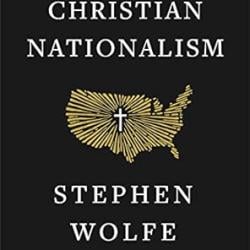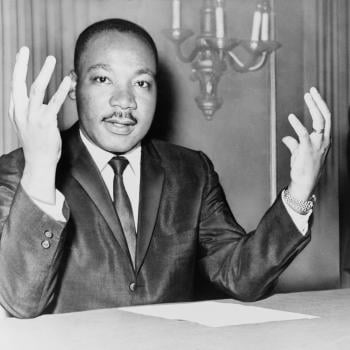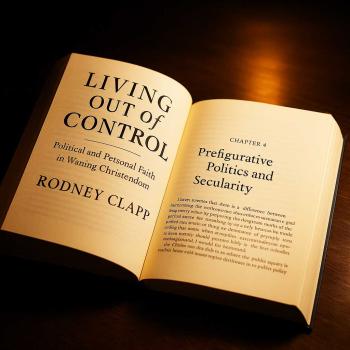Safe and Unsafe Sects (and Problems with Terms for Alternative Religious Groups)
My interest in “cults and new religions” began when I was still a child with my uncle who belonged to a religious group my parents considered a “cult.” I also had a cousin who joined a movement that calls itself a “world faith” but is considered a cult by many people. Somewhere along the way I began to realize that the religious group we, my immediate family and some of my extended family, belonged to is considered a cult by some people. That really got my attention and launched me on a nearly lifelong avocation of studying so-called cults.
When I was still a teenager I began to read books by Marcus Bach (1905-1996), professor of religion at the University of Iowa’s School of Religion. Among them were: Report to Protestants (about non-mainline religious groups, their growth, beliefs, attractions, etc.), Faith and My Friends, Strange Sects and Curious Cults, They Have Found a Faith, and Strangers at the Door. I was especially interested in Bach’s spiritual autobiography The Inner Ecstasy which told me of his conversions to Pentecostalism and then Unity. Eventually I met Bach after he spoke at a Unity church in the city where I was attending college. We chatted for almost half an hour. I found him to be a most engaging person even though I was disappointed to learn of his commitment to New Thought.
When I was still in high school I read a little book entitled Christian Truth and Religious Delusions by Lutheran minister Casper Nervig. The contents are broken down into “truth” versus “error.” For example, Chapter V is “Pentecostalism: Some Truth—Much Error.” Naturally I read that chapter with interest and found that Rev. Nervig knew almost nothing accurate about Pentecostalism. So that made me suspicious of his treatments of other groups such as “Adventism,” “Russellism,” Etc. But what really attracted me to the book was its Chapter IX “Christian Science, Spiritism, Two-By-Twos, No-Creed.” My uncle belonged to a group discussed there. It was the first time I found anything published about the group. But I took what I read there with a grain of salt because of Nervig’s misrepresentations of Pentecostalism. (My uncle would not discuss his religious beliefs with any of us which piqued my curiosity to know more.)
Nervig’s book was almost humorous. I still have that copy that I bought at a used bookstore while in high school. Chapter II is “The Evangelical Lutheran Church: The Church of Truth.” Chapter III is “The Reformed Churches: Much Truth—Some Error”—evidence that the divisions of the Reformation were still not healed when the book was published by a major Lutheran publisher in 1941.
During my college and seminary years I read books about cults and alternative religions voraciously. I read everything I could get my hands on such as Walter Martin’s The Kingdom of the Cults, Anthony Hoekema’s The Four Major Cults, Van Baalen’s The Chaos of the Cults, William Peterson’s Those Curious New Cults and many, many more. Eventually I began to read more sociologically treatments of cults and new religions and realized that sociologists and theologians work with different definitions and marks of cults.
During doctoral work at Rice University (1978-1982) I taught an undergraduate course (together with the chairman of the department Niels Nielsen) called “Deity, Mysticism and the Occult.” Our primary textbook was one very sympathetic to minority, alternative religious groups (a label preferred over “cult” by most sociologists of religion): Religious and Spiritual Groups in Modern America. I invited representatives of many “alternative reality traditions” (another popular sociological label for what others call “cults”) into the class. Houston was rife with them: followers of ISKCON (“Hare Krishnas”), Sufis, Bahais, etc. We took field trips to the Zen center and other locales. I invited an expert on alternative religious groups to speak to the class and we opened that session to the public. He was J. Gordon Melton—later to become known as perhaps the leading expert on cults, new religions, alternative religious groups in America. He flew to Houston from Chicago and I picked him up at the airport. One of the first things he said to me was “Let’s go find some witches.” (His topic was Wicca and Neo-Paganism in America.) Within thirty minutes he had found a true wiccan “store” (almost a coven meeting site) in Houston. His presentation that evening to a large audience was exotic, informing and entertaining. (The trip to “The Occult Shoppe” was for the purpose of illustration during his talk that there were “real witches” in Houston.)
During my tenure as a professor of theology at a well-known evangelical Christian liberal arts college I taught an annual elective course on “America’s Cults and New Religion” that I advertised to the students as “Unsafe Sects.” (The dean wouldn’t allow that course title in the catalog!) After the Jonestown mass suicide and the Branch Davidian disaster students flocked to the course. I always had more students wanting in than I could allow in. I invited speakers from various non-traditional religious groups into the class and also took the students on field trips to meeting spaces of groups such as Scientology, Eckankar, Zen Buddhism, etc. I even found some rather mild “witches” (wiccans) who would speak to the class. For the most part they were funny. (One was a high priestess of a Dianic coven who called herself “Lorelei” and who talked about her all-female coven “sacrificing” pomegranates because they are symbols of male fertility.)
I wrote some scholarly articles and book chapters on alternative religious groups little known to most Americans including Eckankar (“The Ancient Science of Soul Travel”) and Anthroposophy (Rudolf Steiner’s form of “esoteric Christianity”). I tried for fifteen years to find a Rosicrucian to speak to the class without success. However I did find a professor of psychology at a Lutheran college who talked about esoteric Christianity. He would not admit to being a Rosicrucian (nor would he deny it) but I had reason to believe he was.
For those of you becoming concerned about inviting these representatives of alternative religious groups into an undergraduate class at a Christian college let me say that I always used the opportunity of being the teacher to discuss with the students what I believed to be an evangelical Christian assessment of the groups’ beliefs. We also prayed for them before and after they came. And I did not allow them to do anything in class except talk. They were not allowed to chant, hand out food, cast spells, read auras, whatever.
A few times I received calls from concerned parents. (The college president knew all about what I was doing and directed calls to me if they came to him first.) Here is what I always asked the parents that ended their objections: “Which would you rather have your son or daughter experience first—encounters with these people here, in a Christian context bathed in prayer and explanation of why what they believe is not what we believe or encounters with them outside this context? Because they will encounter them.”
Once a student said he did not want to be in the same room with a wiccan; I permitted him to skip class that day (of course).
Getting some speakers to come to my class was an ordeal. I remember calling the local branch of the Church Universal and Triumphant and inviting them to send someone. The woman I spoke to, presumably the leader of the local church, said “Oh, no. That’s a fundamentalist college. We don’t want anything to do with that.” I said “Well, if you don’t come and talk about your movement, the only person they’ll hear talking about it is me. Which would you rather have them hear talk about your group—you or me?” Needless to say, she came and talked to my class. But it was awkward—especially when I asked her to explain the relationship between CUT and the I AM movement and the “Ascended Masters.”
Most of the speakers attempted to ignore their more exotic beliefs and practices, but I pressed them to talk about them.
Through all these experiences, I gradually began to drop the word “cult.” That’s because the media (bless their little pea-pickin’ hearts) took over the word and turned it into something it had not previously been—exclusively an appellation for a dangerous religious group—dangerous like Jonestown and David Koresh’s Branch Davidian group. Not “spiritually dangerous” but dangerous to people’s physical or mental well-being.
Before Jonestown, “cult” was a term primarily used for theologically extremely unorthodox religious group. A group could be perfectly peaceful and prosperous and use no means of “mind control,” etc., and still be a “cult” in the theological sense. Suddenly, or in a relatively brief period of time, “cult” came to mean something else. And groups began to sue people who called them a “cult” even in only the theological sense because the term took on connotations that could bring stigma to them in the wider society—not just among Christians.
I still use the term “cult” for some religious groups but only those that do, indeed, pose a threat to their members’ and/or others’ safety and physical well-being.
However, I think there’s something unfortunate about this.
It’s another example of how a useful religious category has been taken over by pop culture and mass media and changed such that it is hardly useful anymore. If “cult” refers only to truly dangerous groups, groups that pose a physical or extreme psychological threat to people using means of coercion such as sleep deprivation, etc., what term shall we use for religious groups that promote beliefs directly contrary to historic, orthodox Christianity (broadly defined) and that cast aspersions at historic, orthodox Christian denominations and churches and that seek actively to recruit people away from them into their own groups that teach heretical beliefs?
Some religious scholars have proposed these be called “sects” rather than “cults” as the former is less pejorative and you’re less likely to be sued that way. I have myself at times taken that approach. Others use only neutral terms for all non-traditional religious groups such as “alternative religions” and “new religious movements.”
It seems to me that the label “cult” has two radically different meanings. There is first its theological meaning—any religious group that grew out of or poses a direct challenge to orthodox forms of a religion. Second is its sociological meaning—any religious group that exist in strong tension with its surrounding culture and poses physical and/or psychological threats to person’s well-being by, for example, subjecting them to suicidal tendencies in the face of fears of persecution. The problem is that this second meaning has totally replaced the first so that the first can hardly be used anymore.
That leaves those of us concerned to defend orthodox Christianity (broadly defined) against aggressive groups that seek to recruit people away from it by, for example, deception (e.g., that the Trinity was a belief invented by theologians under Constantine in the fourth century) without a label for that category except, perhaps, “heterodox sects” or “unorthodox religious groups.”
But these still exist and insidiously recruit especially among the uninformed Christians. Some of them claim, for example, that their belief in reincarnation and karma is “compatible with Christianity” and that the early church fathers believed in them. Many churches have dropped their defenses against such tactics partly because, I suspect, the word “cult” has been taken away for exclusive use for dangerous religious sects like The People’s Temple (Jonestown) and Koresh’s Branch Davidians (now pretty much extinct and what’s left is not dangerous).
What I am suggesting is that this change in nomenclature is more significant and influential than many people have realized.
So, in the absence of any useful label like “cult,” what shall we do if we Christians want to speak out among ourselves against religious groups we consider spiritually dangerous? We will have to learn to use lists of characteristics:
1) Watch out for pseudo-Christian groups that seek to recruit you or your children (for example) for a radically alternative version of the gospel of Jesus Christ. Such a radically alternative version is usually signaled by a claim for the actual or potential divinity of human persons (equality with God), and/or belief that salvation comes through esoteric knowledge taught by an “enlightened” person whose theology is directly contrary to historic, orthodox Christianity, and/or denial of the Trinity, the unique deity of Jesus Christ, resurrection (as opposed to reincarnation or “spiritual evolution”), the closed canon of Scripture, etc.
2) Watch out for groups whose worldview and belief system are rooted in some other religion but claim their beliefs and practices are “compatible with Christianity.” These usually promote some religious experience that implies the deity of the self.
3) Watch out for groups who seem orthodox in their Christian beliefs but put down all other churches and denominations as not truly Christian and exalt the spiritual status of a human leader whose pronouncements are beyond fault or flaw and must not be challenged.
4) Watch out for groups that seem orthodoxy in their Christian beliefs but use spiritual abuse (manipulation of persons using shame) to stop all critical questioning of the leaders.
We can’t call these groups “cults” anymore, so we will simply have to settle for calling them unorthodox and alternative forms of Christianity (or some other world religion) or, as one “cult watcher” labeled those with orthodox beliefs who fall into “3” and “4” above—T.A.C.O.s (Totalistic, Aberrational, Christian Organizations).
I have noticed over the past decade or two a definite decline of interest in teaching about such groups among even evangelical churches, publications, speakers, etc. I suspect it has to do with the problems of terminology but also with a desire not to appear “intolerant.” But some of those groups are still active and recruiting naïve and untutored Christians away from evangelical and mainline churches into their folds.












